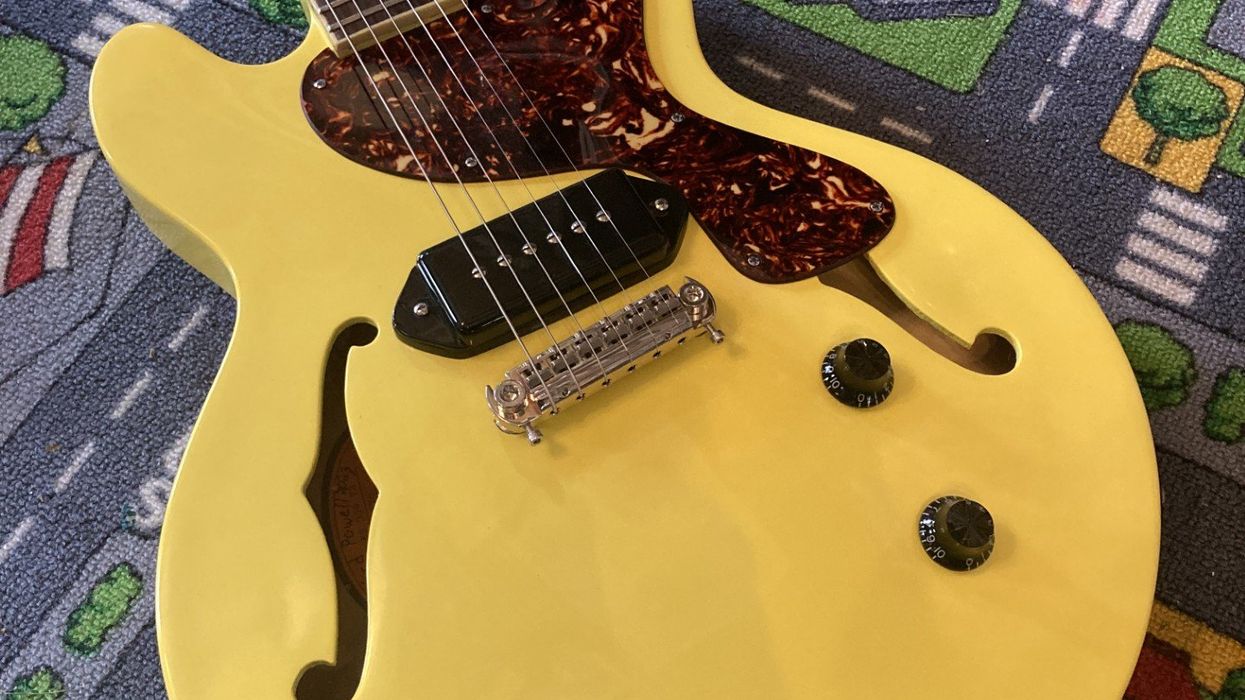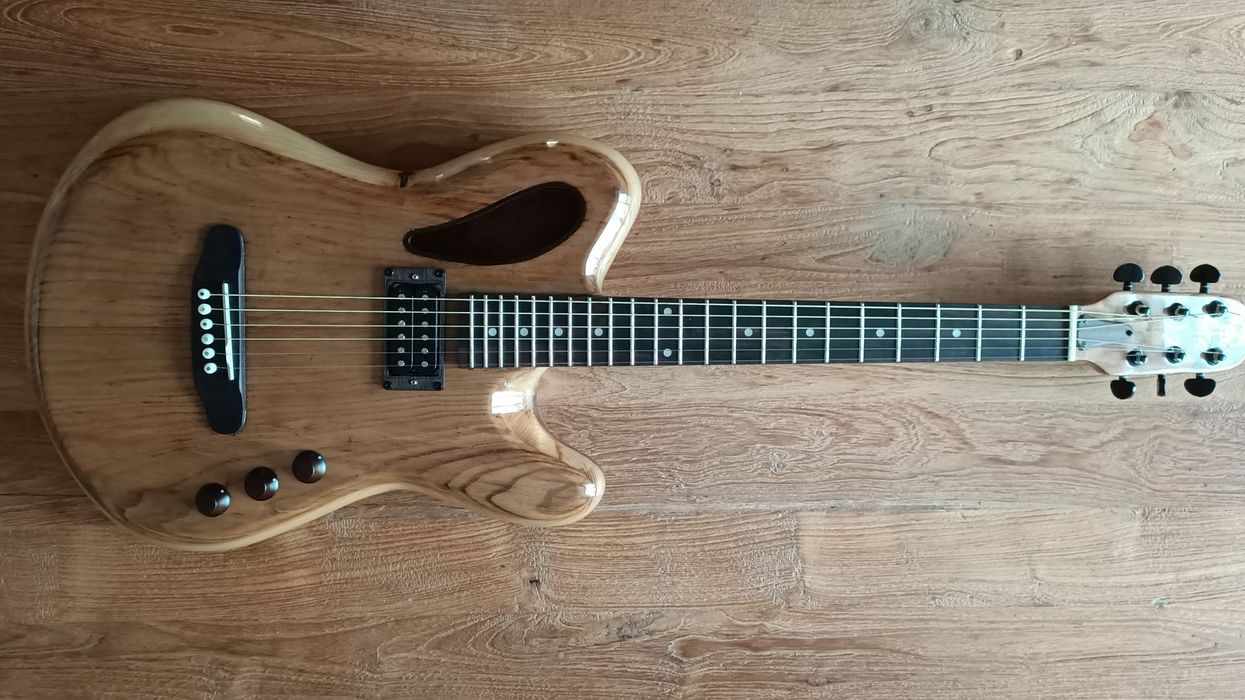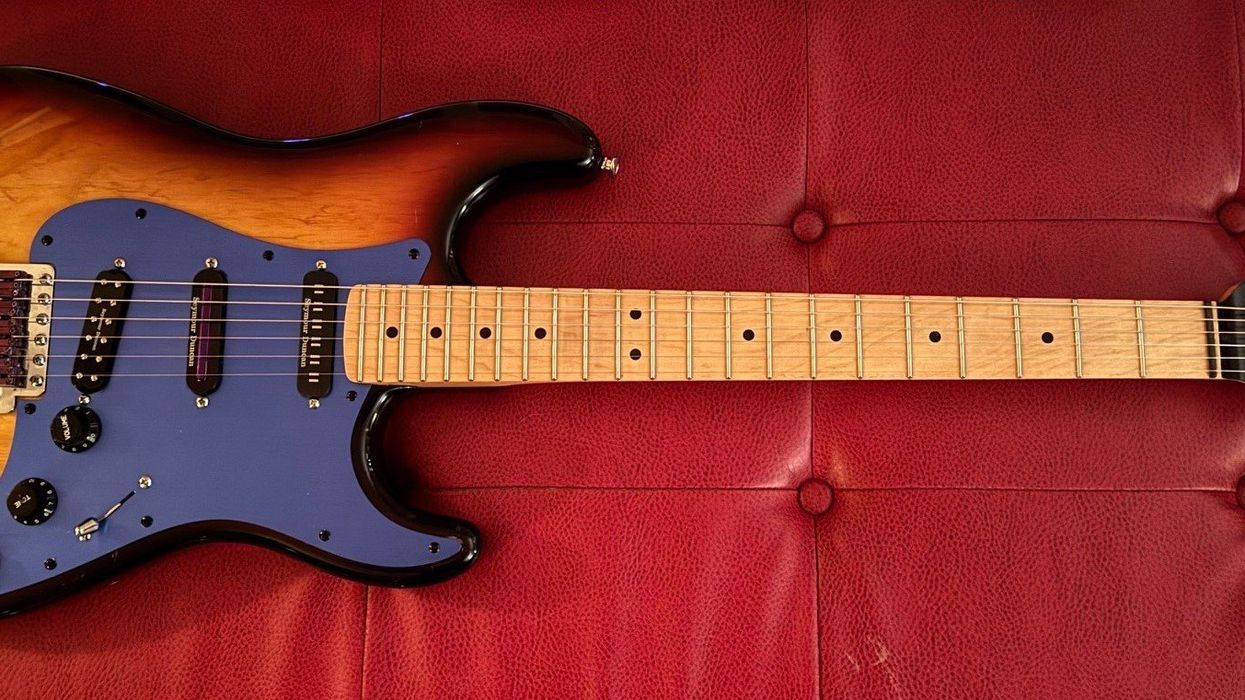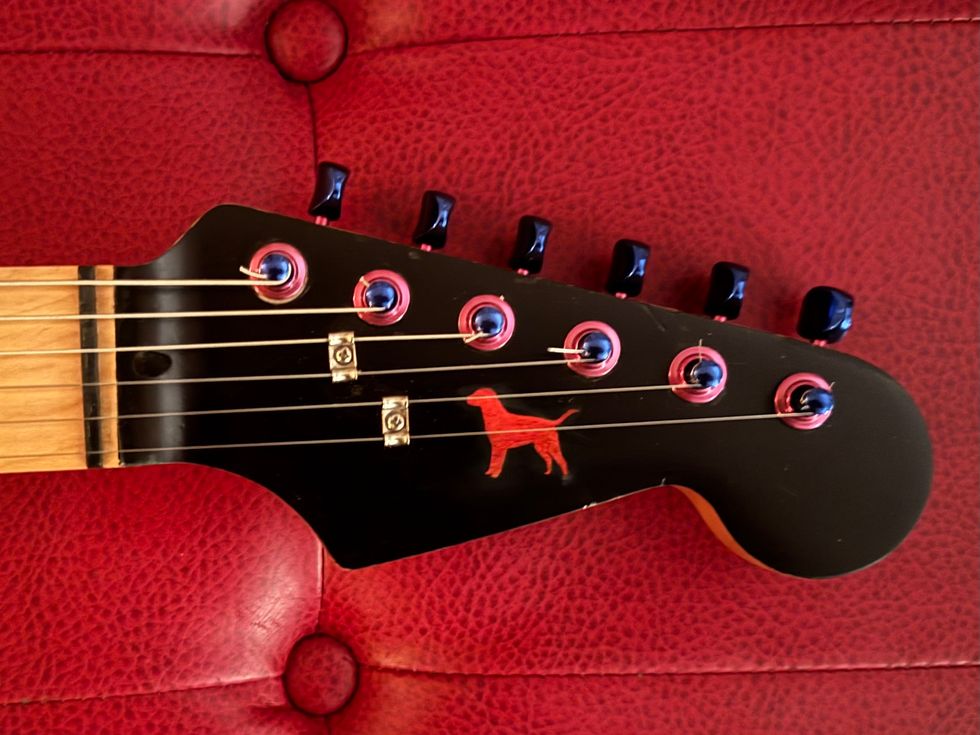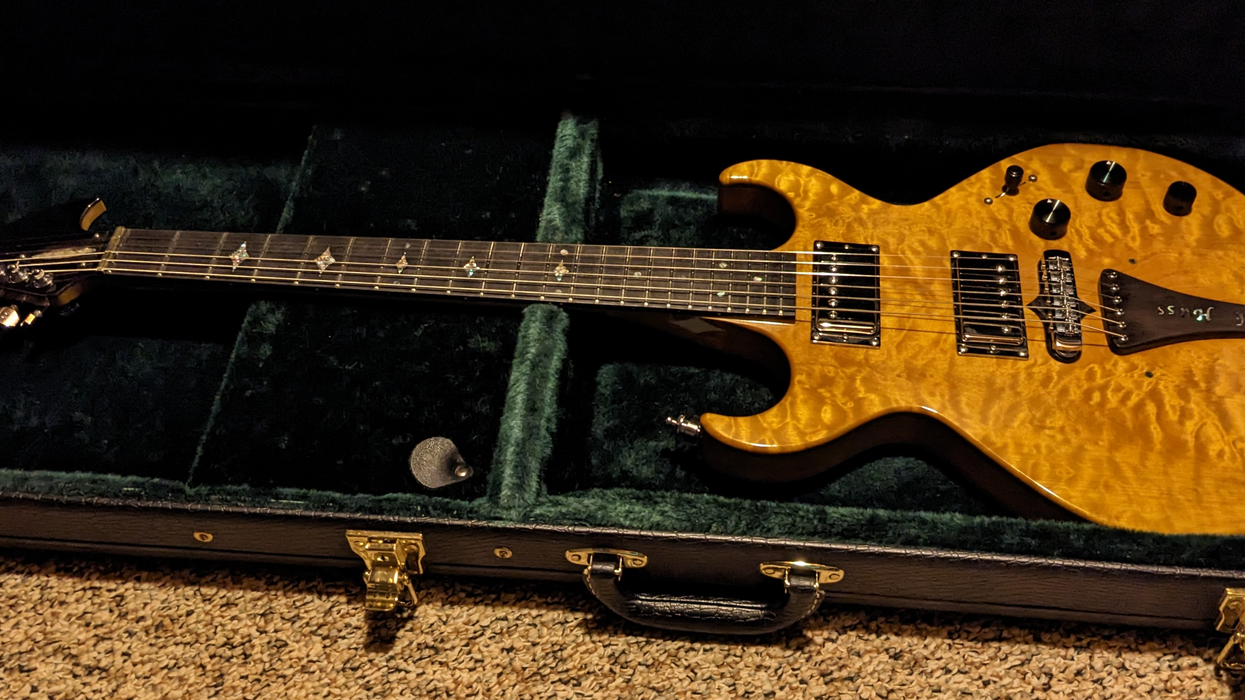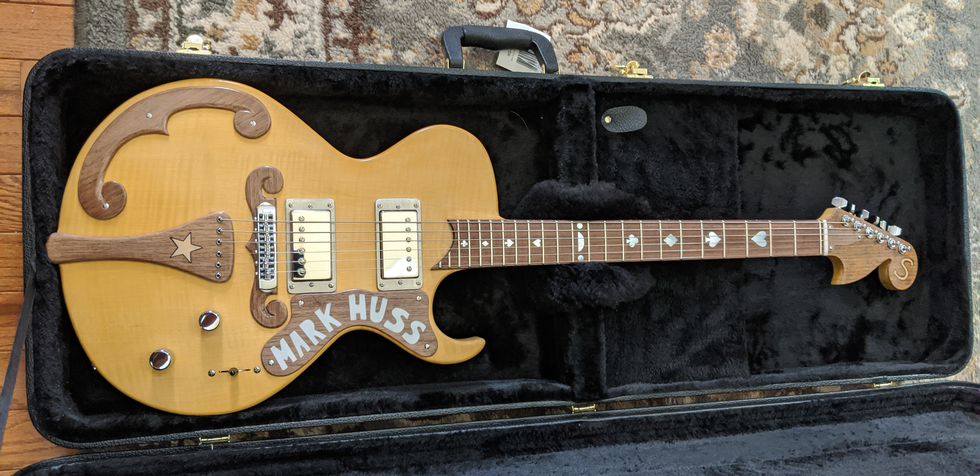A father-and-son team work together to create an original, futuristic gold guitar, and the result is extremely satisfying.
Frank and Eli Doris
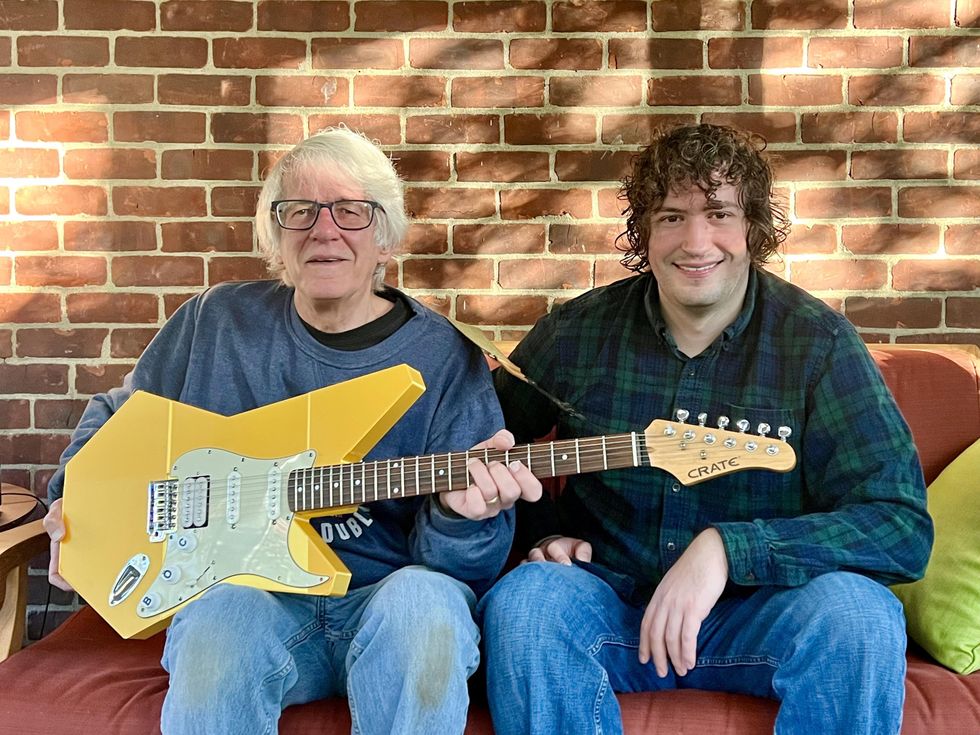
Frank and Eli Doris with the Yellowcaster. A Crate neck and various electronics completed their 3D-printed axe.
Hometown: East Northport, New York
Guitar: Yellowcaster
The father-son team of Frank and Eli Doris decided to create a guitar after Eli got a 3D printer and wanted to use it to create a guitar body. In the time-honored tradition, Frank sketched a design on a napkin, then Eli used a CAD program to design the body and knobs. The 3D printer produced the body, which had to be done in sections, since the printer was limited in the size of the sections it could manufacture. The body sections are held together with super glue. The body is made from Eryone PLA 3D-printable filament, and Frank and Eli decided on the silk gold color, since it was something different from the usual Fender and other guitar colors.
Being a longtime guitar player and tinkerer, Frank had all the parts and electronics on hand, except for the Crate neck, which he bought on Reverb for about $50 (with tuners already installed). The neck and middle pickups are Fender MIM Strat pickups, and the bridge pickup was taken from a 1970s Univox Les Paul Custom copy (the original gold-plated pickup cover had to be removed to allow the pickup to fit in the pickguard). The bridge is a stock Fender with import (MIM, Squier, etc.) string spacing.

The knobs spell out “BÖC,” the abbreviation for Blue Öyster Cult, Frank’s favorite band (Eli likes them, too), and, of course, the “Ö” has the umlaut!
When Eli was assembling the guitar, father and son were thinking, “With luck, this thing won’t just explode as we’re putting it together!” They had no idea if this would actually work. In fact, during the first try, the body cracked and had to be reinforced, and a wood block was inserted to block the tremolo. When stringing the instrument, the guys tried .010-gauge strings at first, but settled on .009s as these put less tension on the guitar.
Frank notes, “When we plugged it in, we were expecting it to sound like a banjo, but the guitar actually sounds great, with a lot of sustain. It also plays like a dream! We took a chance on the neck, but it’s great. The guitar is also surprisingly ergonomic and falls right into place when sitting down.” The Yellowcaster isn’t heavy, either, weighing in at just 6 pounds, 13 ounces.
“The only things we forgot were to add holes for strap buttons, and to think about whether it would fit into a case,” says Frank. As a result, the Yellowcaster doesn’t fit into a standard hardshell case or gig bag, but does fit into a bass gig bag. “We can’t wait to take this guitar out and see people’s reactions!”
Send your guitar story to submissions@premierguitar.com.
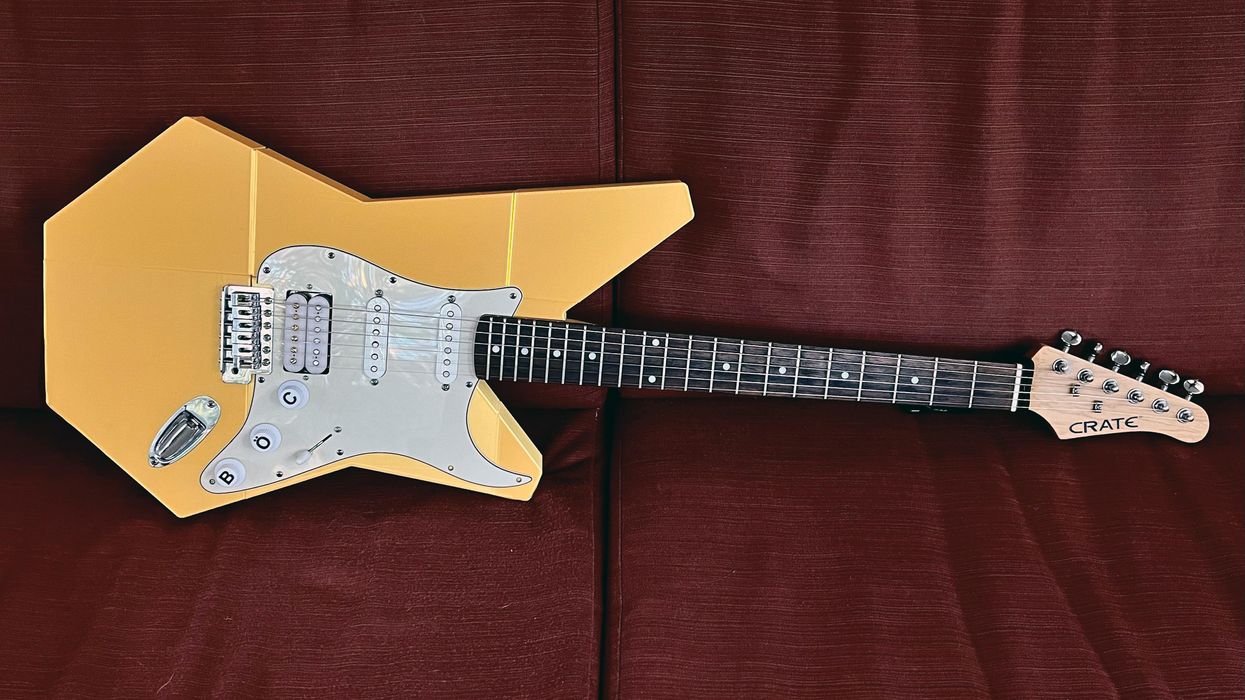


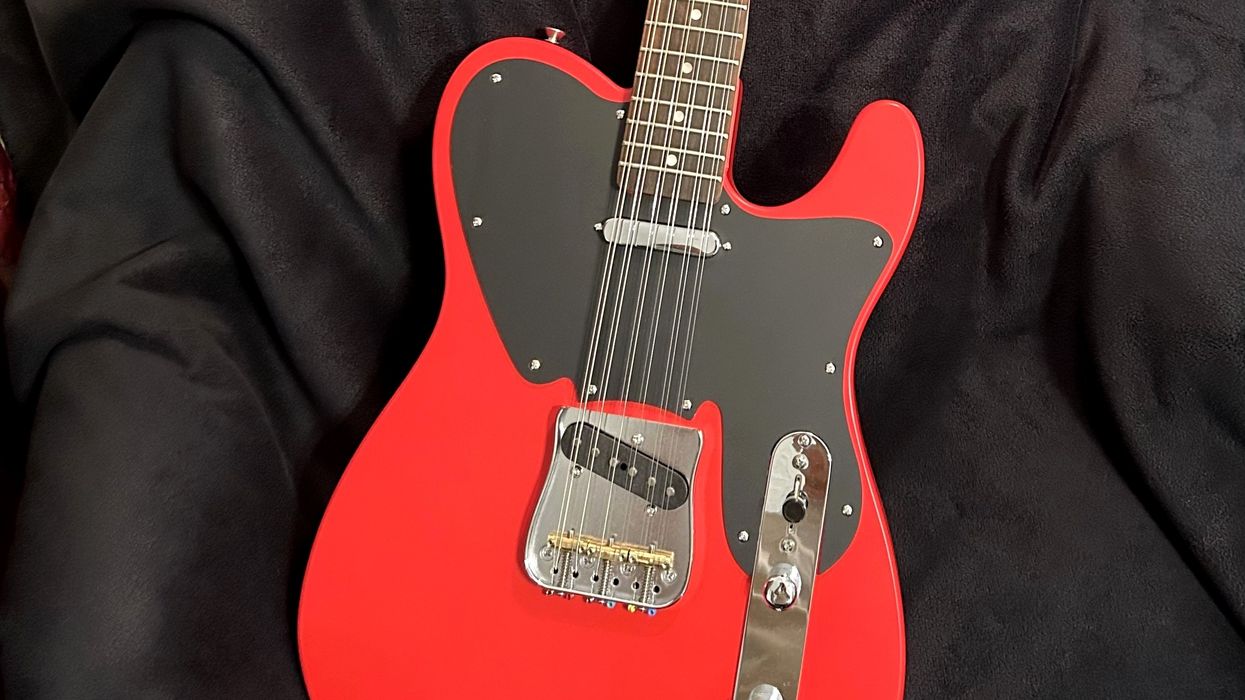

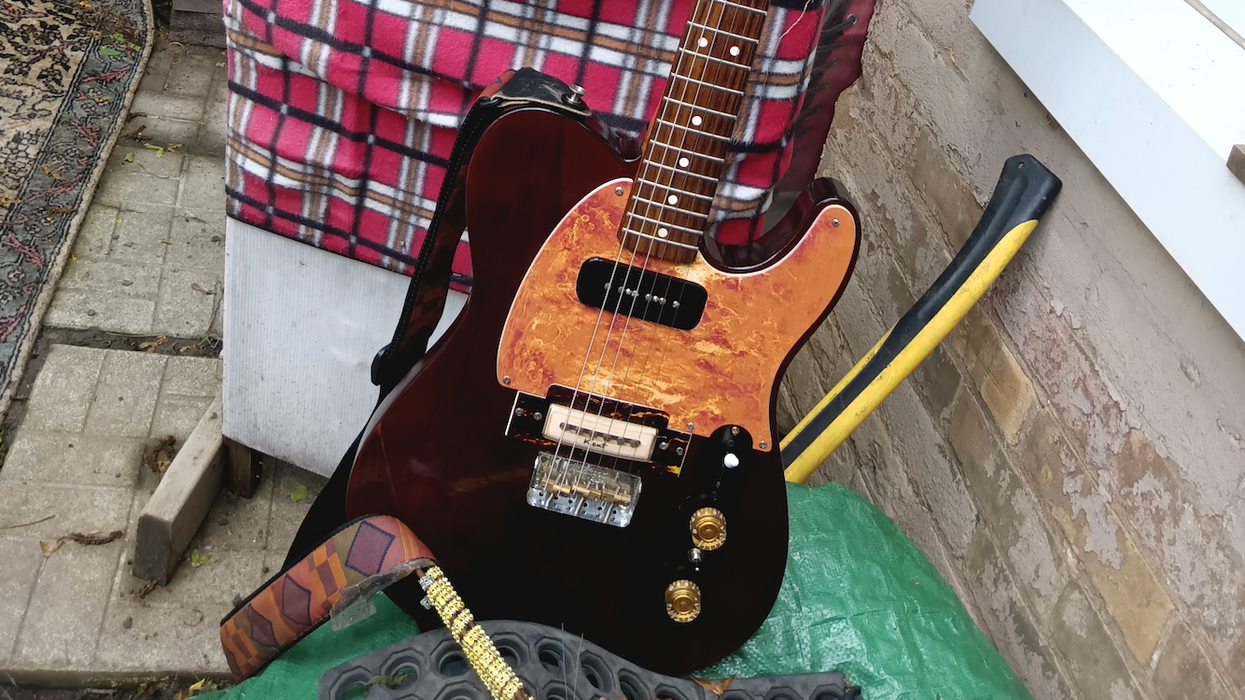
![Rig Rundown: AFI [2025]](https://www.premierguitar.com/media-library/youtube.jpg?id=62064741&width=1245&height=700&quality=70&coordinates=0%2C0%2C0%2C0)

![Devon Eisenbarger [Katy Perry] Rig Rundown](https://www.premierguitar.com/media-library/youtube.jpg?id=61774583&width=1245&height=700&quality=70&coordinates=0%2C0%2C0%2C0)



